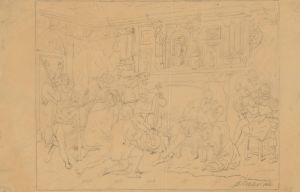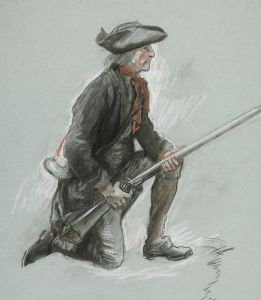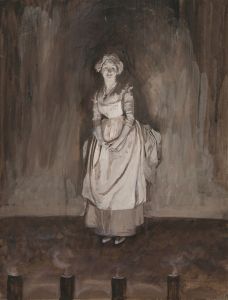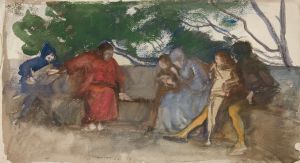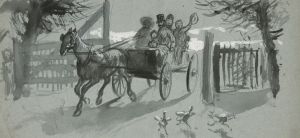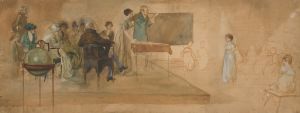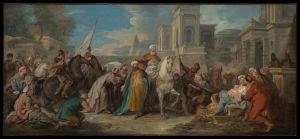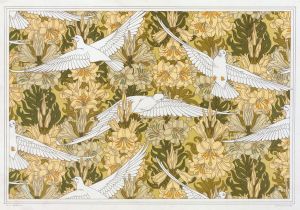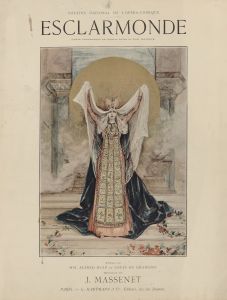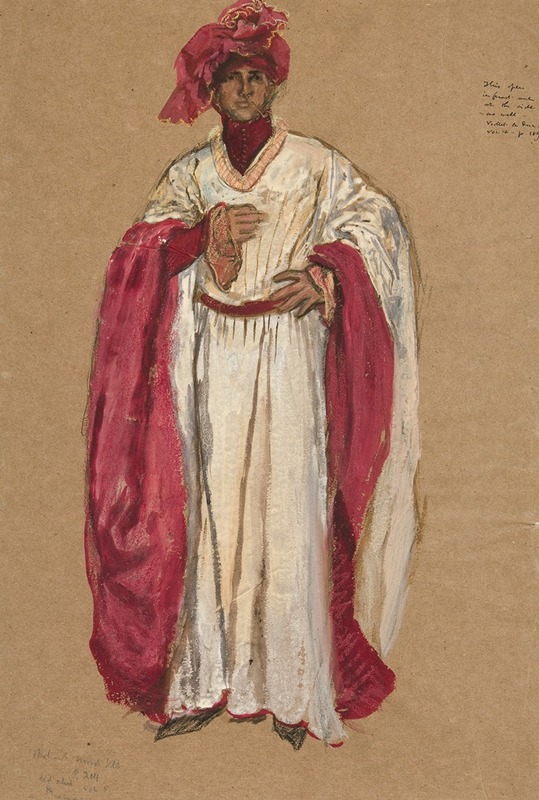
Unidentified man in a red robe, costume sketch for King Richard II
A hand-painted replica of Edwin Austin Abbey’s masterpiece Unidentified man in a red robe, costume sketch for King Richard II, meticulously crafted by professional artists to capture the true essence of the original. Each piece is created with museum-quality canvas and rare mineral pigments, carefully painted by experienced artists with delicate brushstrokes and rich, layered colors to perfectly recreate the texture of the original artwork. Unlike machine-printed reproductions, this hand-painted version brings the painting to life, infused with the artist’s emotions and skill in every stroke. Whether for personal collection or home decoration, it instantly elevates the artistic atmosphere of any space.
"Unidentified Man in a Red Robe, Costume Sketch for King Richard II" is a notable artwork by the American artist Edwin Austin Abbey, renowned for his detailed and historically informed illustrations and paintings. Abbey, born in 1852 in Philadelphia, was a prominent figure in the late 19th and early 20th centuries, known for his work as an illustrator and painter, particularly his depictions of Shakespearean scenes and historical subjects.
This particular piece is a costume sketch created for a production of William Shakespeare's play "King Richard II." Abbey's involvement in theatrical productions, especially those related to Shakespeare, was significant during his career. His ability to capture the essence of historical and literary characters through costume design was highly regarded, and he often collaborated with theater companies to bring authenticity and visual appeal to their productions.
The sketch features an unidentified man dressed in a red robe, a garment that suggests nobility and status, fitting for the historical context of "King Richard II." The play, written by Shakespeare around 1595, is a historical drama that explores the final two years of King Richard II's reign over England, focusing on themes of power, legitimacy, and the divine right of kings. Abbey's work on this sketch would have been part of a larger effort to visually represent these themes through costume and set design.
Abbey's attention to detail is evident in the rendering of the robe, which likely reflects the fashion and style of the late 14th century, the period in which King Richard II reigned. His use of color, particularly the rich red of the robe, would have been chosen not only for its visual impact but also for its historical accuracy and symbolic meaning. Red, often associated with royalty and authority, underscores the character's significance within the play.
While the identity of the man in the sketch remains unknown, the artwork itself serves as a testament to Abbey's skill in combining historical research with artistic creativity. His contributions to the visual arts, particularly in the realm of theatrical design, have left a lasting impact, influencing how historical and literary figures are portrayed on stage.
Edwin Austin Abbey's legacy extends beyond his costume sketches; he was also a muralist and a member of the Royal Academy of Arts. His work continues to be studied and appreciated for its artistic merit and historical significance. The "Unidentified Man in a Red Robe" sketch is a fine example of Abbey's dedication to bringing the past to life through art, capturing the imagination of audiences both in his time and today.





